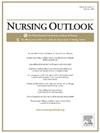护理中的物理人工智能:机器人
IF 3.7
2区 医学
Q1 NURSING
引用次数: 0
摘要
在物理人工智能(AI)进步的推动下,机器人技术为创造创新的护理模式提供了潜在的解决方案,但也面临许多挑战,以满足未来的需求。目的概述各个行业的机器人技术,并解释物理人工智能如何帮助机器人的发展和集成到熟练的护理中。我们讨论了将机器人纳入护理的机遇和挑战,并为护士提供了设计包括机器人在内的公平、以人为本的护理模式的建议。方法本文讨论了跨行业的机器人技术,重点是医疗保健和护理。它考察了技术能力、护理教育需求以及伦理、监管和劳动力影响。机器人越来越多地用于物流、清洁和有限的直接护理任务。物理人工智能的进步将使机器人能够在动态环境中感知、推理和行动,支持人机合作和病人护理。挑战包括技术限制、伦理问题、获取差距和监管缺口。护理教育必须发展为准备专业人员与机器人系统的协作实践。结论机器人技术必须通过虚拟护理模型和远程操作来增强护理服务。护士必须在设计、实施和规范机器人技术方面发挥领导作用,以确保它们提高患者的治疗效果,促进健康公平。本文章由计算机程序翻译,如有差异,请以英文原文为准。
Physical artificial intelligence in nursing: Robotics
Background
Robotics, driven by advancements in physical artificial intelligence (AI), offers potential solutions–yet many challenges– to creating innovative care models to meet the needs of the future.
Purpose
To present an overview of robotics across various industries and explain how physical AI is aiding the development and integration of robots into skilled nursing. We discuss the opportunities and challenges of incorporating robots into nursing and offer recommendations for nurses on designing equitable, human-centered care models that include robotics.
Methods
This paper discusses robotics across industries, with a focus on healthcare and nursing. It examines technological capabilities, nursing education needs, and ethical, regulatory, and workforce implications.
Discussion
Robots are increasingly used for logistics, cleaning, and limited direct care tasks. Advancement in physical AI will enable robots to perceive, reason, and act in dynamic environments, supporting human-robot teaming and patient care. Challenges include technical limitations, ethical concerns, disparities in access, and regulatory gaps. Nursing education must evolve to prepare professionals for collaborative practice with robotic systems.
Conclusion
Robotics must be designed to augment care delivery, such as through virtual care models and remote operation. Nurses must lead in designing, implementing, and regulating robotic technologies to ensure they enhance patient outcomes and promote health equity.
求助全文
通过发布文献求助,成功后即可免费获取论文全文。
去求助
来源期刊

Nursing Outlook
医学-护理
CiteScore
6.20
自引率
7.00%
发文量
109
审稿时长
25 days
期刊介绍:
Nursing Outlook, a bimonthly journal, provides innovative ideas for nursing leaders through peer-reviewed articles and timely reports. Each issue examines current issues and trends in nursing practice, education, and research, offering progressive solutions to the challenges facing the profession. Nursing Outlook is the official journal of the American Academy of Nursing and the Council for the Advancement of Nursing Science and supports their mission to serve the public and the nursing profession by advancing health policy and practice through the generation, synthesis, and dissemination of nursing knowledge. The journal is included in MEDLINE, CINAHL and the Journal Citation Reports published by Clarivate Analytics.
 求助内容:
求助内容: 应助结果提醒方式:
应助结果提醒方式:


